In Brussels, Titus Kaphar recasts the figures in Renaissance Christian art
In a deconsecrated church in Brussels, American painter Titus Kaphar confronts representation in Renaissance iconography. Here, we offer a virtual walkthrough of the artist’s solo show, ‘The Evidence of Things Unseen’
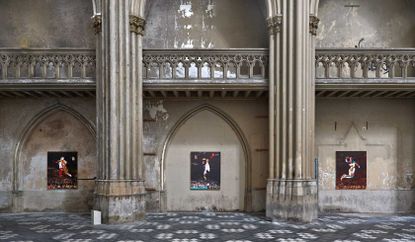
Titus Kaphar’s ability to prompt reflection on long-standing systemic oppressions, particularly through his dismantling and reconfiguration of classical structures in Western art, has never felt more poignant than in these times. His signature approach of deconstructing established iconography and imagery, and then rebuilding them with the inclusion of Black possibilities and representation has struck a resonant chord, especially in the way it encourages viewers to reassess the cultural canon and question how it came to be so.
Kaphar’s elegant and powerful dialogue takes on added significance in a new solo exhibition that’s currently being staged at L’Église du Gesú in Brussels, a deconsecrated church. Organised by the gallery Maruani Mercier and titled ‘The Evidence of Things Unseen’, the show presents new and recent works that address the issue of representation in Renaissance Christian imagery. Alongside this show, Kaphar is also presenting a series of new paintings in ‘From a Tropical Space’, a solo exhibition at Gagosian in New York.
In Brussels, set within the church’s crumbling, graffitied walls and neo-Gothic architecture, the array of works on view range from precise oil paintings to three-dimensional physical interventions that reinterpret historical artworks. An arresting rumpled canvas, titled Susan and the Elders sees Kaphar put his spin on the well-known narrative that originates from the Roman Catholic and Orthodox Church, just like masters such as Rembrandt, Tintoretto, Van Dyck and Rubens did before him. Dynamically crumpled, undulating and protruding from the wall, it fights its way into the viewer’s space to be fully reckoned with.
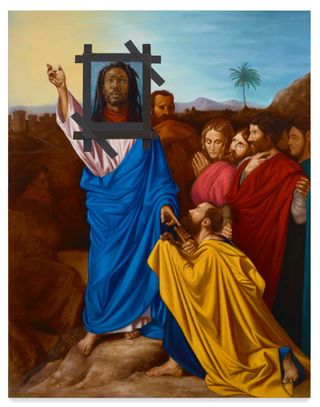
In another piece, Jesus Noir, the Michigan-born artist covers the face of Christ with a portrait of a young Black man using duct tape, thus imbuing the work with a sense of poignant urgency.
Beyond the venue’s religious significance, the presentation of the works in Belgium itself – the home of Northern Renaissance art – brings another layer of meaning to the exhibition. In Kaphar’s work, biblical figures are either glaringly erased using tar or adapted to reflect a contemporary context. Ascension III for example, sees the silhouettes of god-like sports figures created from a mélange of classical iconography.
‘If we don’t amend history by making new images and new representations, we are always going to be excluding ourselves,’ Kaphar states. There certainly is no going forward if we can’t look back.
Installation video of ’The Evidence of Things Unseen’, a solo exhibition of Titus Kaphar at L’Église du Gesú, Brussels, 2020 (c) Dave Bruel. Courtesy MARUANI MERCIER

Installation view of 'The Evidence of Things Unseen', a solo exhibition of Titus Kaphar at L’Église du Gesú, Brussels, presented by MARUANI MERCIER.
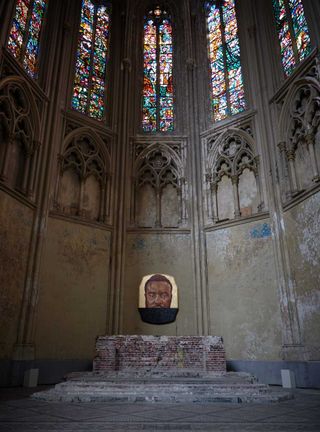
Installation view of 'The Evidence of Things Unseen', a solo exhibition of Titus Kaphar at L’Église du Gesú, Brussels, presented by MARUANI MERCIER.
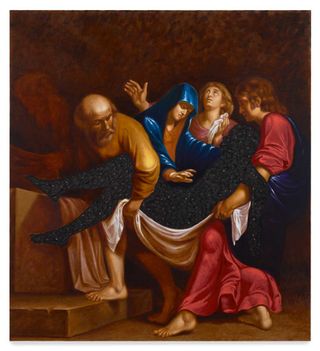
Titus Kaphar, Untitled, 2020, oil and tar on canvas.
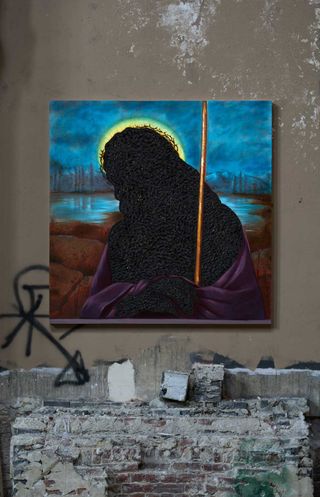
Installation video of 'The Evidence of Things Unseen’, a solo exhibition of Titus Kaphar at L’Église du Gesú, Brussels, 2020
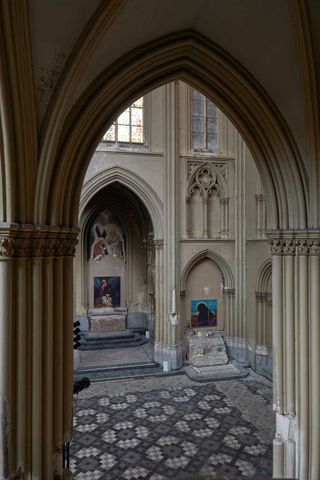
Installation video of 'The Evidence of Things Unseen’, a solo exhibition of Titus Kaphar at L’Église du Gesú, Brussels, 2020
INFORMATION
‘The Evidence of Things Unseen’ is available to view online at maruanimercier.com
Kaphar's concurrent exhibition, 'From a Tropical Space' is on view at Gagosian West 21st Street, New York until 19 December. gagosian.com
Wallpaper* Newsletter
Receive our daily digest of inspiration, escapism and design stories from around the world direct to your inbox
Pei-Ru Keh is a former US Editor at Wallpaper*. Born and raised in Singapore, she has been a New Yorker since 2013. Pei-Ru held various titles at Wallpaper* between 2007 and 2023. She reports on design, tech, art, architecture, fashion, beauty and lifestyle happenings in the United States, both in print and digitally. Pei-Ru took a key role in championing diversity and representation within Wallpaper's content pillars, actively seeking out stories that reflect a wide range of perspectives. She lives in Brooklyn with her husband and two children, and is currently learning how to drive.
-
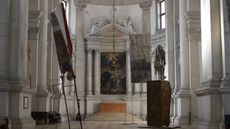 Berlinde De Bruyckere’s angels without faces touch down in Venice church
Berlinde De Bruyckere’s angels without faces touch down in Venice churchBelgian artist Berlinde De Bruyckere’s recent archangel sculptures occupy the 16th-century white marble Abbazia di San Giorgio Maggiore for the Venice Biennale 2024
By Osman Can Yerebakan Published
-
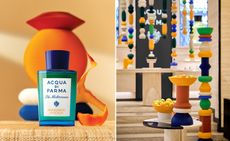 Discover Acqua di Parma’s new Mandarino di Sicilia fragrance at Milan Design Week 2024
Discover Acqua di Parma’s new Mandarino di Sicilia fragrance at Milan Design Week 2024Acqua di Parma and Fornice Objects bring the splendour of Sicilian mandarin fields to Milan to celebrate new fragrance Mandarino di Sicilia
By Simon Mills Published
-
 First look at Samba Room, London’s innovative cocktail lounge packed with Brazilian energy
First look at Samba Room, London’s innovative cocktail lounge packed with Brazilian energyLondon’s Samba Room, an extension of SushiSamba, is a dynamic bar, lounge and private dining space designed by Fabled Studio
By Tianna Williams Published
-
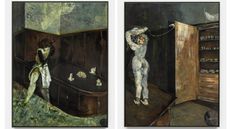 Guglielmo Castelli considers fragility and violence with painting series in Venice
Guglielmo Castelli considers fragility and violence with painting series in VeniceGuglielmo Castelli’s exhibition ‘Improving Songs for Anxious Children’ at Palazzetto Tito, Venice, explores childhood as the genesis of discovery
By Sofia Hallström Published
-
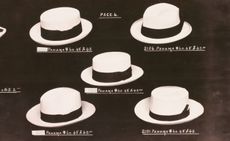 The Met’s ‘The Real Thing: Unpacking Product Photography’ dissects the avant-garde in early advertising
The Met’s ‘The Real Thing: Unpacking Product Photography’ dissects the avant-garde in early advertisingA new exhibition at The Metropolitan Museum of Art in New York explores the role of product photography and advertising in shaping the visual language of modernism
By Zoe Whitfield Published
-
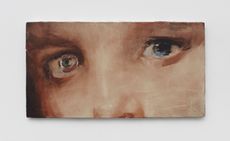 ‘Accordion Fields’ at Lisson Gallery unites painters inspired by London
‘Accordion Fields’ at Lisson Gallery unites painters inspired by London‘Accordian Fields’ at Lisson Gallery is a group show looking at painting linked to London
By Amah-Rose Abrams Published
-
 Detroit Institute of Arts celebrates Black cinema
Detroit Institute of Arts celebrates Black cinema‘Regeneration: Black Cinema 1898-1971’ at the Detroit Institute of Arts (DIA) brings lost or forgotten films, filmmakers and performers to a contemporary audience
By Anne Soward Published
-
 BLUM marks 30 years of Japanese contemporary art in America
BLUM marks 30 years of Japanese contemporary art in AmericaBLUM will take ‘Thirty Years: Written with a Splash of Blood’ to its New York space in September 2024, continuing its celebration of Japanese contemporary art in America
By Timothy Anscombe-Bell Published
-
 Todd Gray’s sculptural photography collages defy dimension, linearity and narrative
Todd Gray’s sculptural photography collages defy dimension, linearity and narrativeIn Todd Gray’s New York exhibition, he revisits his 40-year archive, fragmented into elaborated frames that open doors for new readings
By Osman Can Yerebakan Published
-
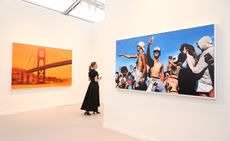 Frieze LA 2024 guide: the art, gossip and buzz
Frieze LA 2024 guide: the art, gossip and buzzOur Frieze LA 2024 guide includes everything you need to know and see in and around the fair
By Renée Reizman Published
-
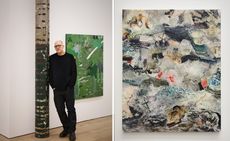 New York artist Christopher Astley showcases an alternative natural world
New York artist Christopher Astley showcases an alternative natural worldAt Martos Gallery in New York, Christopher Astley’s paintings evoke an alternative natural world and the chaos of warfare (until 16 March 2024)
By Tianna Williams Published